#still old art but . but but i wanted to post fhe rest !!!!!!!!!!!!!
Text
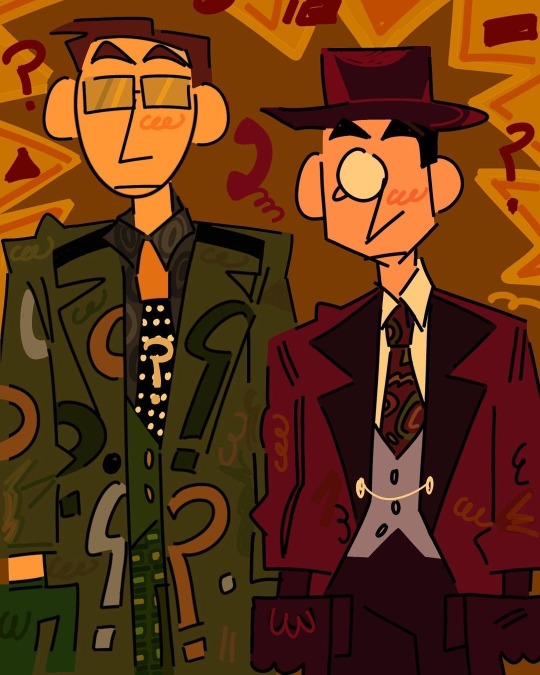



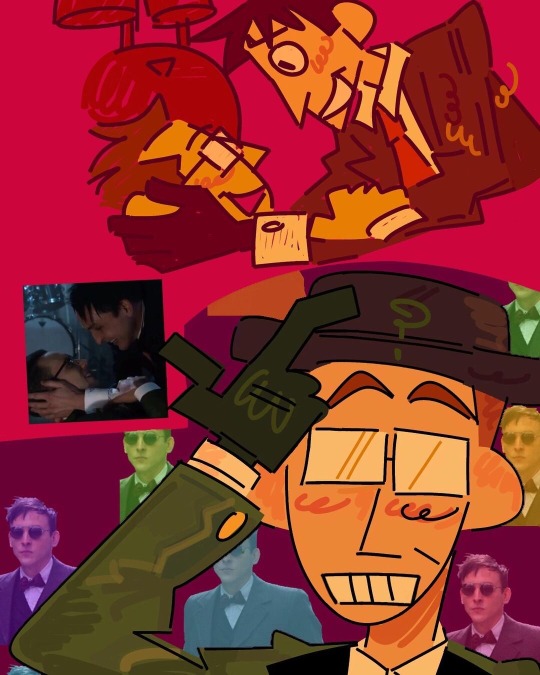
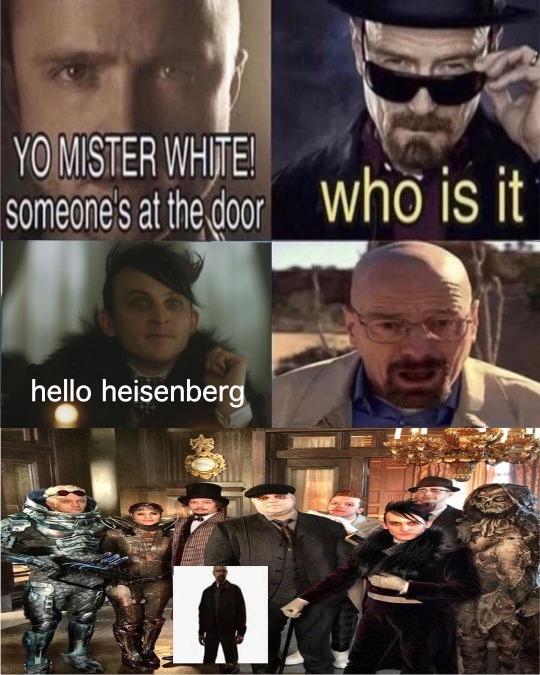
. all the tags ..that’s right We’re serious
#still old art but . but but i wanted to post fhe rest !!!!!!!!!!!!!#gotham#nygmobblepot#riddlebird#might as well#edward nygma#the riddler#oswald cobblepot#the penguin
680 notes
·
View notes
Text
Bust of Marcus Garvey v. 1. After a massive protest by Rastas in Papine Square on June 25, 2017, the University of the West Indies agreed to take down the offending bust and replace it with another that would approximate the demands for a big-head, big nosed Garvey more like the photos that exist of him.
youtube
My column of June 2 in the Gleaner. After much public agitation and disapproval the University of the West Indies finally agreed to bow to public pressure and withdraw the offending bust. At a tumultuous press briefing (see video above for a brief taste of the event) the Dean confirmed that a new bust would be produced by August 2017. The sculptor would still be Raymond Watson. At the briefing Watson said that he had tried to create a youthful image of Garvey, to befit the University setting where the bust would be installed.
During his lifetime Garvey was much vilified as those who fight the status quo often are. Born in Jamaica he strode forth boldly into the world and changed it by rallying people of African origin who had been systematically exploited and denigrated by slavery. His influence rebounded all the way from the Americas to Africa, where he promised to take all those who wanted to ‘go back home’ in the immortal words of Jamaican singing star Bob Andy. To the pre-eminent shipping enterprise of the day, White Star Line, he counterpoised his Black Star Line, a fleet of ships that would carry the descendants of slaves back to Africa. The rest is history.
Decades after they’re gone how do we memorialize such individuals? In May 2017 during a short run of Garvey: The Musical at the University of the West Indies in Kingston a bust of the great man was unveiled at the Department of Humanities and Education. Members of the Marcus Garvey Movement on campus had demanded a statue of Garvey after a life-size one of Mahatma Gandhi was installed there a few years ago. How could the University pay tribute to an Indian leader before even nodding in the direction of its own home-grown hero, the first national hero of the country, they asked.
Accordingly the Dean of the Faculty of Humanities and Education (FHE), Professor Waibinte Wariboko, a Nigerian by birth, volunteered to take on the task of arranging for a suitable monument to the great man. A Jamaican sculptor, Raymond Watson, was commissioned to produce a bust, the University’s slender resources not stretching to accommodate the expense of a full-bodied statue in these hard times.
Dean Wariboko holds press briefing to discuss plans for version 2 of Marcus Garvey bust, June 30, 2017
Details of the commission, such as the brief presented to the sculptor, are unknown but on May 19 the bust was duly unveiled in the courtyard of the FHE. The ceremony was timed to coincide with the visit of Professor Rahamon Adisa Bello, vice-chancellor of the University of Lagos in Nigeria, who jointly unveiled it with the Principal of the Mona Campus, Archibald McDonald. When they ritually removed the cover revealing the modest bust underneath a gasp of consternation went up from the audience. Rastafari representatives in the audience started grumbling loudly that this was the statue of an imposter, not Garvey, this slim, unremarkable, downtrodden looking person could never represent the magnificent Marcus. Garvey, they said. Many agreed.
“Garvey seems poorly. His posture conveys passivity. He looks like a weakling,” declared Carolyn Cooper in her column. #NotmyGarvey protested lecturer Isis Semaj-Hall commenting on what she called the “slimmed down interpretation” of the great leader. This is a “UWI interpretation of Garvey” said a Facebook commenter while Xavier Hutchinson accused the sculptor of “fat shaming one of my heroes.”
Suzette Gardner was kinder to Watson: “Maybe he was trying to inspire young people capturing Garvey as a youth. Still, Garvey might have been slimmer but his head was always big. Give us our big headed Garvey so the youth can know him as he was – young or old!”
According to Am’n Ron: “Regardless of the artist’s explanation this presentation should never have been approved. This was a moment for a recognizable rendering that will last through the generations and not a moment for a random artistic interpretation. From what period in Garvey’s life did he take this, and what is the image source he used? This seemingly made a mockery of the whole effort. I fully appreciate the spirit of the mounting of a Garvey bust, and I agree that it was overdue, but I’m in agreement with the woman who calmly said, “tek it dung!” To those who have the authority, please replace it. It feels disrespectful.”
Another Facebook commenter said: “I’ve been too upset to speak on it but i have much more to say. I will write and share. The best part of the ceremony for me was catching up with people I have not seen in ages. Unfortunately it was an upsetting occasion for all of us.”
For me the problem wasn’t so much that the bust didn’t look anything like the Garvey we feel we’ve come to know and love. It’s the scale and unambitious scope of the representation that bother me.The only other life-like sculptures on campus are of Mahatma Gandhi (Indian) and Philip Sherlock (white) both full body representations. Then for the champion of black identity you have a modest bust. It’s a problem to say the least.
In the weeks since the unveiling calls have been mounting for the removal of the ‘fake’ statue of Garvey. The Gandhi and Sherlock sculptures were gifts to the university, and it may be that those who feel strongly about this might have to undertake to commission a better representation of Garvey that can be situated at the University of the West Indies or some other location.
Petrina Dacres, whose Ph.D dissertation, “Modern monuments: Fashioning history and identity in post -colonial Jamaica” documents the furore surrounding almost every public monument in Jamaica, was also at the press briefing.
In future any public commissions of art should be informed by the well-documented history of responses to public monuments in Jamaica. Edna Manley lecturer and first Stuart Hall Fellow Petrina Dacres has written an entire thesis on the subject. There is no excuse to be caught by surprise like this. Contrary to what many seem to think, commissions of public statuary are not occasions for artists to wield artistic license and express themselves as they would with work meant for a gallery or private setting.
Garvey Lite? My column of June 2 in the Gleaner. After much public agitation and disapproval the University of the West Indies finally agreed to bow to public pressure and withdraw the offending bust.
#Jamaica#Marcus Garvey#Petrina Dacres#public art#Public monuments#Rastafari#UNIA#University of the West Indies
2 notes
·
View notes
Text
I had a post apocalyptic dream. Me and two others were out searching for resources and stumbled upon an abandoned art store. We broke in, and I excitedly started grabbing watercolor paper, pens, watercolor sets, brushes, and gouache tubes. The others weren't as interested. I returned two more times after that.
We came across a family in a suburban area outside the city. They expressed that they preferred it out here. Their kid didn't agree though. They were about the age of a young teen. We tried to tell the parents that it was going to much safer in the city, with the rest of the community. We returned later to them to try again. While the other two talked with the parents, I played catch with the kid in the middle of the street. Even though the world had ended, standing in the middle of the street still felt wrong/risky. I kept looking for cars that were never going to come. This fact settled in in a bad way. I felt overcome with grief for the world and life I, or anyone else for that matter, would never know again. When I looked behind me for another car, I noticed a glimmer on the hillside. And then another, as the first disappeared. I tilted my head to the side and saw another glimmer as the other disappeared. It was like there were bits of glitter scattered on the hillside and on the bark of the trees. This was a warning though. I snapped out of my grief filled haze and remembered where, and when, I was. The kid had run to their home, and I ran to the abandoned house me and the other two were using as temporary shelter. When I shut the door I heard them say, "you finally decided to come inside". It was a lot darker outside. I must have looked surprised. "We tried to talk to you but you were unresponsive. You just stared down the street". I had a moment of realizing they left me to die. I wondered what we were really doing here. I realized I had no idea. But we weren't here to help an isolated family.
When I returned to the abandoned art store for fhe third (and last) time, I ran into someone. I shur the door and ran around the corner, putting down everything I'd picked up. When they came out to investigate, the three of us talked. It turned out they'd moved in. They turned to me to negotiate. In exchange for a cheap watercolor paper pad, and some nice colored pencils, I promised not to tell anyone she was there, and left.
Some time had passed. Maybe a few years, maybe several months. It was hard to tell. It was like time passed differently now. Like everything was frozen in this after effect of the world ending. Like everything blended into one, long continuous day. Like it was always that first week of scrambling for resources and trying to get to the hills for safety, only to find out that was actually the most dangerous place to be.
I found myself in another city. A group of people had been working on restoring things and life to the way it used to be. Part of that was getting a train functional again. They wanted to connect the city with a neighboring one. And this was also like a familiar taste that everyone was craving. A sentiment, a feeling that everything was going to return to normal, that everything was going to be alright. I boarded the train. There was a fair amount of skepticism and doubt in this, by a lot of people. About whether this was safe, about the condition of the tracks, and especially regarding the fact that the conductor was not a conductor in his old life, and as far as anyone knows wasn't instructed by one. This was the trains first official departure after being restored and tested. The train crawled forwards into the underground tunnel. It was pitch black, and you could hear the screeching and creaking of the train bouncing off the walls. It exited the tunnel into a cave. Looking out the window, you could see maybe 50-70 people working along side the tracks and walls of the cave. They didn't seem at all surprised by the train, even disregarding it's existence. It was hard to tell what they were doing exactly. Carving the walls into shape? mining coal ? they were gathering something, loading rocks into carts and hauling them away. As we approached the end of the cave the train sped up. I could see daylight approaching. The train kept going faster, and faster. And judging the feelings in the air, I wasn't the only one who felt tense and uneasy as the train shook and rocked slightly under the force of the speed. We came out into daylight suddenly, and kept moving forwards. Then you could hear a crash. And a wave of force rippled through the train and shook us like we were rag dolls. I looked out the window and saw that our car had been separated from the rest of the train, which kept barreling forwards. There was the remains of a semi truck beside the tracks. Further away, the train crashed into another semi truck before derailing. Something didn't feel right, but I couldn't place a finger on it. I gathered an armful of my belongings into a new bag , a collection of sentimental things I'd held onto throughout the years: Various pins, a short roundish bottle with a pink wrapper, polly pockets, a small plastic cat, etc etc -- and things I meant to send to my ex a long, long time ago. MY GBA games and gameboy advance didn't survive. I jumped out of the train, and like many others, began walking down the tracks back the direction we came. When we approached the cave, the 50-70 people were still hard at work. None of them paid any attention to us, despite some people's efforts to question them. It was like we didn't exist. Or, I thought to myself, like they didn't exist. In the cave, you could hear the rumbling of a train approaching, but everytime you turned your head in the direction you thought it was coming from, it changed direction. It was always behind you. Some people began running. When I reached the train station, it was filled with people. Way more people than were known to live in the community here. I saw my ex. I gave her the things I meant to ages ago, and we talked about how weird things were now. She had to go, and we hugged. As we did I started crying. I'd missed her so much. We parted ways.
#ok there's definitely a few things missing i think#but this time it only took abt 40 minutes to type instesd of 1.5 hours
0 notes
Text
Bust of Marcus Garvey v. 1. After a massive protest by Rastas in Papine Square on June 25, 2017, the University of the West Indies agreed to take down the offending bust and replace it with another that would approximate the demands for a big-head, big nosed Garvey more like the photos that exist of him.
youtube
My column of June 2 in the Gleaner. After much public agitation and disapproval the University of the West Indies finally agreed to bow to public pressure and withdraw the offending bust. At a tumultuous press briefing (see video above for a brief taste of the event) the Dean confirmed that a new bust would be produced by August 2017. The sculptor would still be Raymond Watson. At the briefing Watson said that he had tried to create a youthful image of Garvey, to befit the University setting where the bust would be installed.
During his lifetime Garvey was much vilified as those who fight the status quo often are. Born in Jamaica he strode forth boldly into the world and changed it by rallying people of African origin who had been systematically exploited and denigrated by slavery. His influence rebounded all the way from the Americas to Africa, where he promised to take all those who wanted to ‘go back home’ in the immortal words of Jamaican singing star Bob Andy. To the pre-eminent shipping enterprise of the day, White Star Line, he counterpoised his Black Star Line, a fleet of ships that would carry the descendants of slaves back to Africa. The rest is history.
Decades after they’re gone how do we memorialize such individuals? In May 2017 during a short run of Garvey: The Musical at the University of the West Indies in Kingston a bust of the great man was unveiled at the Department of Humanities and Education. Members of the Marcus Garvey Movement on campus had demanded a statue of Garvey after a life-size one of Mahatma Gandhi was installed there a few years ago. How could the University pay tribute to an Indian leader before even nodding in the direction of its own home-grown hero, the first national hero of the country, they asked.
Accordingly the Dean of the Faculty of Humanities and Education (FHE), Professor Waibinte Wariboko, a Nigerian by birth, volunteered to take on the task of arranging for a suitable monument to the great man. A Jamaican sculptor, Raymond Watson, was commissioned to produce a bust, the University’s slender resources not stretching to accommodate the expense of a full-bodied statue in these hard times.
Dean Wariboko holds press briefing to discuss plans for version 2 of Marcus Garvey bust, June 30, 2017
Details of the commission, such as the brief presented to the sculptor, are unknown but on May 19 the bust was duly unveiled in the courtyard of the FHE. The ceremony was timed to coincide with the visit of Professor Rahamon Adisa Bello, vice-chancellor of the University of Lagos in Nigeria, who jointly unveiled it with the Principal of the Mona Campus, Archibald McDonald. When they ritually removed the cover revealing the modest bust underneath a gasp of consternation went up from the audience. Rastafari representatives in the audience started grumbling loudly that this was the statue of an imposter, not Garvey, this slim, unremarkable, downtrodden looking person could never represent the magnificent Marcus. Garvey, they said. Many agreed.
“Garvey seems poorly. His posture conveys passivity. He looks like a weakling,” declared Carolyn Cooper in her column. #NotmyGarvey protested lecturer Isis Semaj-Hall commenting on what she called the “slimmed down interpretation” of the great leader. This is a “UWI interpretation of Garvey” said a Facebook commenter while Xavier Hutchinson accused the sculptor of “fat shaming one of my heroes.”
Suzette Gardner was kinder to Watson: “Maybe he was trying to inspire young people capturing Garvey as a youth. Still, Garvey might have been slimmer but his head was always big. Give us our big headed Garvey so the youth can know him as he was – young or old!”
According to Am’n Ron: “Regardless of the artist’s explanation this presentation should never have been approved. This was a moment for a recognizable rendering that will last through the generations and not a moment for a random artistic interpretation. From what period in Garvey’s life did he take this, and what is the image source he used? This seemingly made a mockery of the whole effort. I fully appreciate the spirit of the mounting of a Garvey bust, and I agree that it was overdue, but I’m in agreement with the woman who calmly said, “tek it dung!” To those who have the authority, please replace it. It feels disrespectful.”
Another Facebook commenter said: “I’ve been too upset to speak on it but i have much more to say. I will write and share. The best part of the ceremony for me was catching up with people I have not seen in ages. Unfortunately it was an upsetting occasion for all of us.”
For me the problem wasn’t so much that the bust didn’t look anything like the Garvey we feel we’ve come to know and love. It’s the scale and unambitious scope of the representation that bother me.The only other life-like sculptures on campus are of Mahatma Gandhi (Indian) and Philip Sherlock (white) both full body representations. Then for the champion of black identity you have a modest bust. It’s a problem to say the least.
In the weeks since the unveiling calls have been mounting for the removal of the ‘fake’ statue of Garvey. The Gandhi and Sherlock sculptures were gifts to the university, and it may be that those who feel strongly about this might have to undertake to commission a better representation of Garvey that can be situated at the University of the West Indies or some other location.
Petrina Dacres, whose Ph.D dissertation, “Modern monuments: Fashioning history and identity in post -colonial Jamaica” documents the furore surrounding almost every public monument in Jamaica, was also at the press briefing.
In future any public commissions of art should be informed by the well-documented history of responses to public monuments in Jamaica. Edna Manley lecturer and first Stuart Hall Fellow Petrina Dacres has written an entire thesis on the subject. There is no excuse to be caught by surprise like this. Contrary to what many seem to think, commissions of public statuary are not occasions for artists to wield artistic license and express themselves as they would with work meant for a gallery or private setting.
Garvey Lite? My column of June 2 in the Gleaner. After much public agitation and disapproval the University of the West Indies finally agreed to bow to public pressure and withdraw the offending bust.
#Jamaica#Marcus Garvey#Petrina Dacres#public art#Public monuments#Rastafari#UNIA#University of the West Indies
1 note
·
View note
Text
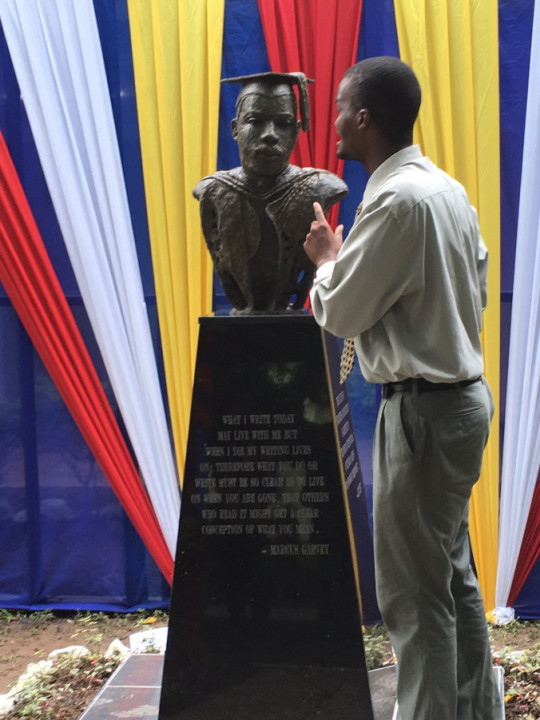
Bust of Marcus Garvey v. 1. After a massive protest by Rastas in Papine Square on June 25, 2017, the University of the West Indies agreed to take down the offending bust and replace it with another that would approximate the demands for a big-head, big nosed Garvey more like the photos that exist of him.
My column of May 31 in the Gleaner. After much public agitation and disapproval the University of the West Indies finally agreed to bow to public pressure and withdraw the offending bust. At a tumultuous press briefing (see video above for a brief taste of the event) the Dean confirmed that a new bust would be produced by August 2017. The sculptor would still be Raymond Watson. At the briefing Watson said that he had tried to create a youthful image of Garvey, to befit the University setting where the bust would be installed.
During his lifetime Garvey was much vilified as those who fight the status quo often are. Born in Jamaica he strode forth boldly into the world and changed it by rallying people of African origin who had been systematically exploited and denigrated by slavery. His influence rebounded all the way from the Americas to Africa, where he promised to take all those who wanted to ‘go back home’ in the immortal words of Jamaican singing star Bob Andy. To the pre-eminent shipping enterprise of the day, White Star Line, he counterpoised his Black Star Line, a fleet of ships that would carry the descendants of slaves back to Africa. The rest is history.
Decades after they’re gone how do we memorialize such individuals? In May 2017 during a short run of Garvey: The Musical at the University of the West Indies in Kingston a bust of the great man was unveiled at the Department of Humanities and Education. Members of the Marcus Garvey Movement on campus had demanded a statue of Garvey after a life-size one of Mahatma Gandhi was installed there a few years ago. How could the University pay tribute to an Indian leader before even nodding in the direction of its own home-grown hero, the first national hero of the country, they asked.
Accordingly the Dean of the Faculty of Humanities and Education (FHE), Professor Waibinte Wariboko, a Nigerian by birth, volunteered to take on the task of arranging for a suitable monument to the great man. A Jamaican sculptor, Raymond Watson, was commissioned to produce a bust, the University’s slender resources not stretching to accommodate the expense of a full-bodied statue in these hard times.
Dean Wariboko holds press briefing to discuss plans for version 2 of Marcus Garvey bust, June 30, 2017
Details of the commission, such as the brief presented to the sculptor, are unknown but on May 19 the bust was duly unveiled in the courtyard of the FHE. The ceremony was timed to coincide with the visit of Professor Rahamon Adisa Bello, vice-chancellor of the University of Lagos in Nigeria, who jointly unveiled it with the Principal of the Mona Campus, Archibald McDonald. When they ritually removed the cover revealing the modest bust underneath a gasp of consternation went up from the audience. Rastafari representatives in the audience started grumbling loudly that this was the statue of an imposter, not Garvey, this slim, unremarkable, downtrodden looking person could never represent the magnificent Marcus. Garvey, they said. Many agreed.
“Garvey seems poorly. His posture conveys passivity. He looks like a weakling,” declared Carolyn Cooper in her column. #NotmyGarvey protested lecturer Isis Semaj-Hall commenting on what she called the “slimmed down interpretation” of the great leader. This is a “UWI interpretation of Garvey” said a Facebook commenter while Xavier Hutchinson accused the sculptor of “fat shaming one of my heroes.”
Suzette Gardner was kinder to Watson: “Maybe he was trying to inspire young people capturing Garvey as a youth. Still, Garvey might have been slimmer but his head was always big. Give us our big headed Garvey so the youth can know him as he was – young or old!”
According to Am’n Ron: “Regardless of the artist’s explanation this presentation should never have been approved. This was a moment for a recognizable rendering that will last through the generations and not a moment for a random artistic interpretation. From what period in Garvey’s life did he take this, and what is the image source he used? This seemingly made a mockery of the whole effort. I fully appreciate the spirit of the mounting of a Garvey bust, and I agree that it was overdue, but I’m in agreement with the woman who calmly said, “tek it dung!” To those who have the authority, please replace it. It feels disrespectful.”
Another Facebook commenter said: “I’ve been too upset to speak on it but i have much more to say. I will write and share. The best part of the ceremony for me was catching up with people I have not seen in ages. Unfortunately it was an upsetting occasion for all of us.”
For me the problem wasn’t so much that the bust didn’t look anything like the Garvey we feel we’ve come to know and love. It’s the scale and unambitious scope of the representation that bother me.The only other life-like sculptures on campus are of Mahatma Gandhi (Indian) and Philip Sherlock (white) both full body representations. Then for the champion of black identity you have a modest bust. It’s a problem to say the least.
In the weeks since the unveiling calls have been mounting for the removal of the ‘fake’ statue of Garvey. The Gandhi and Sherlock sculptures were gifts to the university, and it may be that those who feel strongly about this might have to undertake to commission a better representation of Garvey that can be situated at the University of the West Indies or some other location.
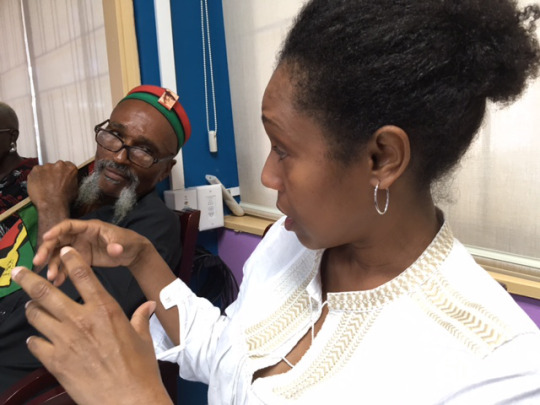
Petrina Dacres, whose Ph.D dissertation, “Modern monuments: Fashioning history and identity in post -colonial Jamaica” documents the furore surrounding almost every public monument in Jamaica, was also at the press briefing.
In future any public commissions of art should be informed by the well-documented history of responses to public monuments in Jamaica. Edna Manley lecturer and first Stuart Hall Fellow Petrina Dacres has written an entire thesis on the subject. There is no excuse to be caught by surprise like this. Contrary to what many seem to think, commissions of public statuary are not occasions for artists to wield artistic license and express themselves as they would with work meant for a gallery or private setting.
Garvey Lite? My column of May 31 in the Gleaner. After much public agitation and disapproval the University of the West Indies finally agreed to bow to public pressure and withdraw the offending bust.
#Jamaica#Marcus Garvey#Petrina Dacres#public art#Public monuments#Rastafari#UNIA#University of the West Indies
0 notes